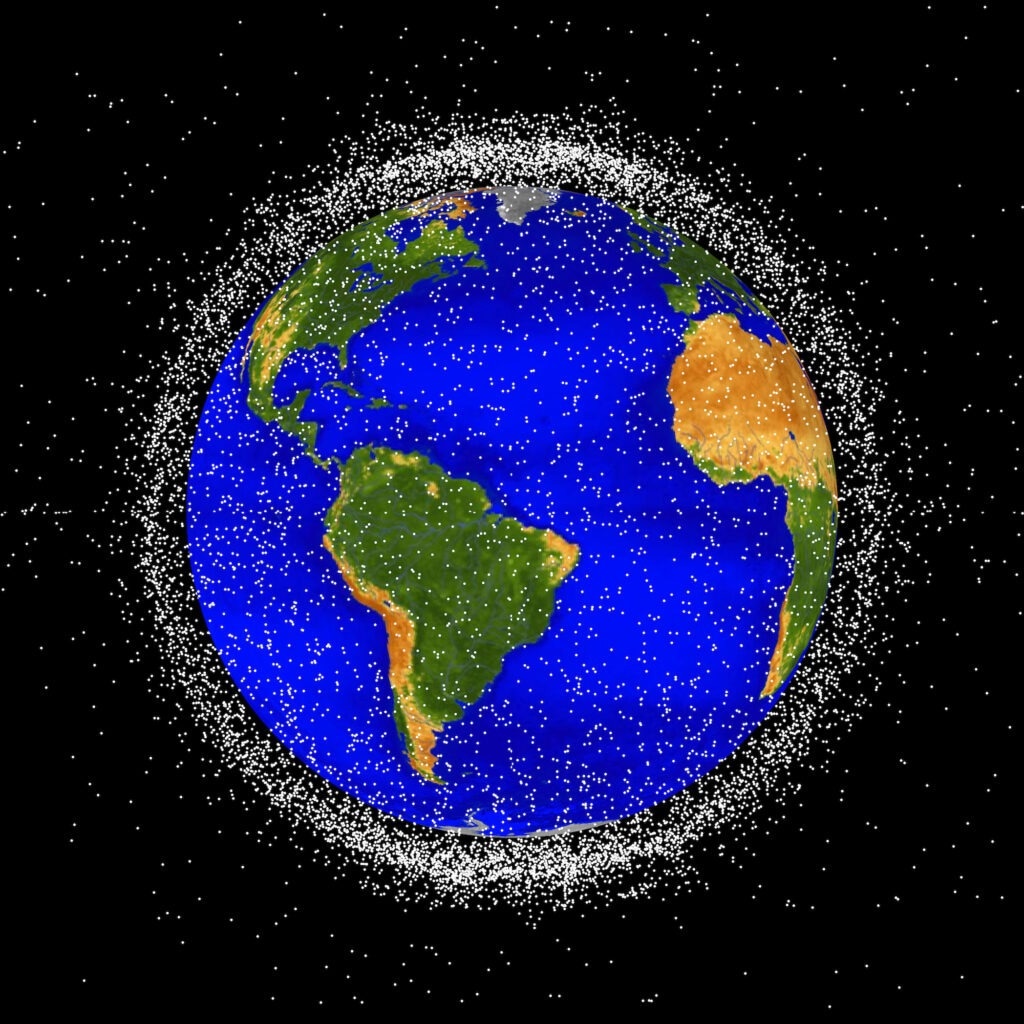Researchers from the University of Michigan have devised a strategy that might finally allow satellite and spacecraft operators to identify minuscule particles of junk circling Earth.

A computer-generated image of trackable objects in low Earth orbit. Each dot represents an object, and around 95% of them are debris. The trackable objects are already beginning to form a cloud of debris around Earth, but there are millions of smaller pieces that can’t be tracked from the ground. Image Credit: NASA Orbital Debris Program Office
Right now, we detect space debris by looking for objects that reflect light or radar signals. The smaller the objects get, the harder it becomes to get sunlight or radar signals strong enough to detect them from the ground.
Nilton O. Renno, Study Principal Investigator and Professor, Climate and Space Sciences and Engineering, University of Michigan
Currently, the only trackable remnants of this “space junk”—less than 1% of the approximately 170 million bits of debris left over after spacewalks, rocket launches, and retired satellites—are things bigger than a softball. The new technique can identify junk with a diameter of less than one millimeter or about the same thickness as pencil lead.
Renno and Yun Zhang, a postdoctoral researcher in climate and space sciences and engineering, presented the results at the Second International Orbital Debris Conference held on December 5th, 2023.
These are some of the initial findings from wider joint research supported by the Space Debris Identification and Tracking Program of the Intelligence Advanced Research Projects Activity. Blue Halo, a military contractor, is spearheading the initiative, which involves the University of Alaska Fairbanks.
Not only is space trash unappealing it also poses a risk. A plum-sized piece of space debris could impact another object with the same energy as a car wreck on the highway, possibly rendering a satellite inoperable, given its usual orbital speed of 22,000 miles per hour.
For satellites and spacecraft that must make evasive maneuvers, detecting even small fragments is vital to the mission since they might cause damage to the ship.
The rising amount of debris in Earth’s orbit makes satellite protection more difficult. Space debris frequently collides with one another, shattering bigger particles into smaller, imperceptible fragments.
Some scientists worry that when individual pieces continue to impact, the amount of space debris might rise rapidly, eventually causing havoc on the infrastructure used for GPS, mobile phone data, weather monitoring, and other purposes.
Collisions between space junk might be the most effective means of tracking little space junk, notwithstanding the possibility of catastrophic consequences. Little chunks of space debris explode into tiny pieces upon collision, and some of the heat generated by the impact causes the fragments to evaporate into charged gases.
When the cloud of charged gas and debris fragments expands, it creates lightning-like energy bursts, similar to signals produced by static sparks that appear after rubbing a freshly laundered blanket.
Mojtaba Akhavan-Tafti, Study Lead Scientist and Assistant Research Scientist, Climate and Space Sciences and Engineering, University of Michigan
When charged solid debris particles get near enough to one another after this first energy burst, they can produce electric field pulses that can cause further bursts of energy similar to lightning. These brief electric signals have the potential to be used for tracking space debris and clouds of minuscule particles created when junk collides.
The team’s most recent computer models show that when two pieces of aluminum hit each other at average orbital speeds, they release an electrical burst strong enough to be detected from the ground by a 26-meter dish equipped with a high-quality radio receiver. In a similar vein, the electric field pulses ought to be discernible through more sensitive radio arrays, like NASA’s Deep Space Network.
There are still many issues to resolve. The speed of the impact and the composition of the debris might affect the electrical signal’s frequency, which could make detection more difficult. The electric signals must travel through Earth’s upper atmosphere and be stronger than the background signals of the terrestrial equipment to be seen.
Through the use of more computer simulations, actual signal measurements via NASA’s Deep Space Network, and data analysis from hypervelocity tests conducted at NASA’s Ames Research Center and the Naval Research Laboratory, the team intends to improve its methodology. The researchers can launch various debris varieties at targets at varying orbital speeds using the lasers at the facilities and measure the properties of the electric emissions that are released after the impact.
Such investigations might provide information not only about the location of space debris but also about its composition and appearance if they manage to identify a broad spectrum of electrical signals produced after debris impacts.
“We want to know if an object is hard or soft because that will impact how it orbits and how damaging it can be,” Akhavan-Tafti concluded.